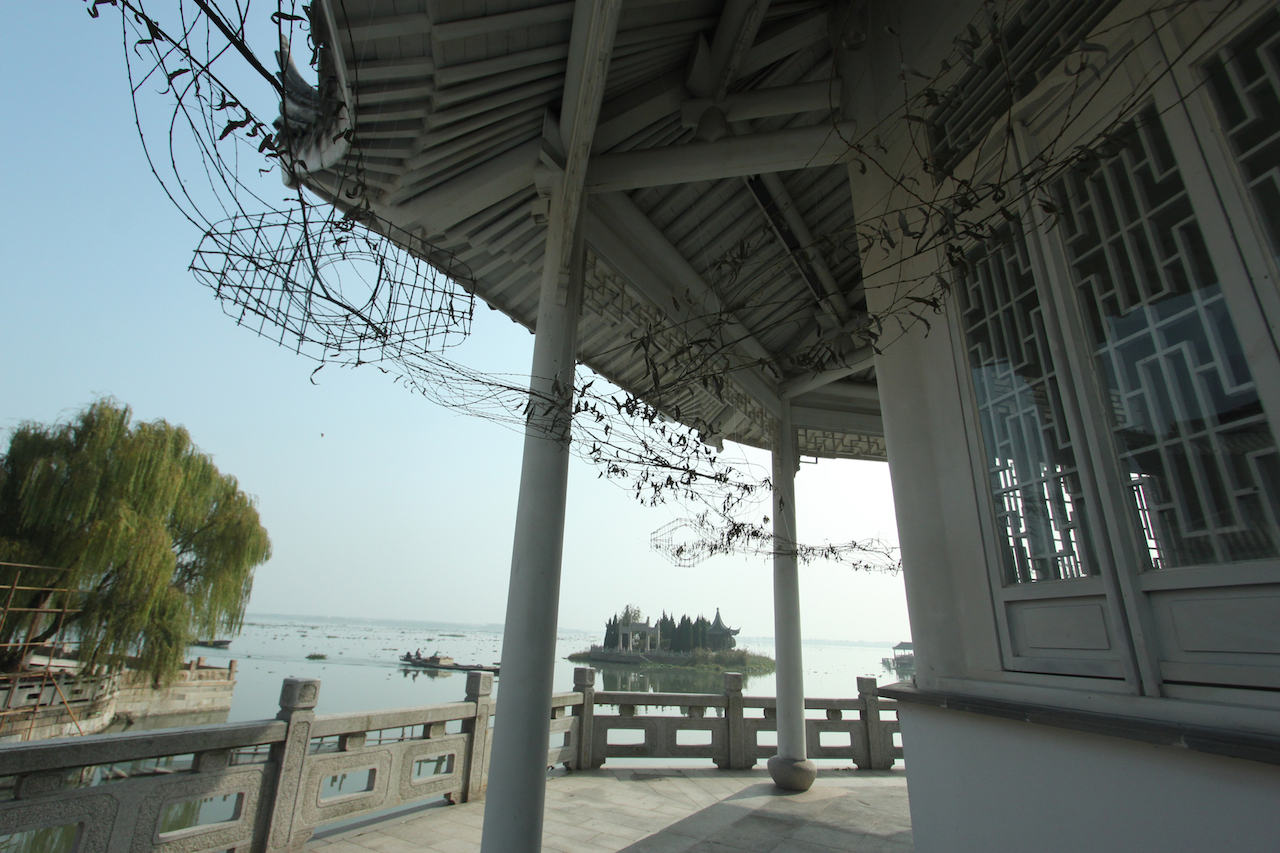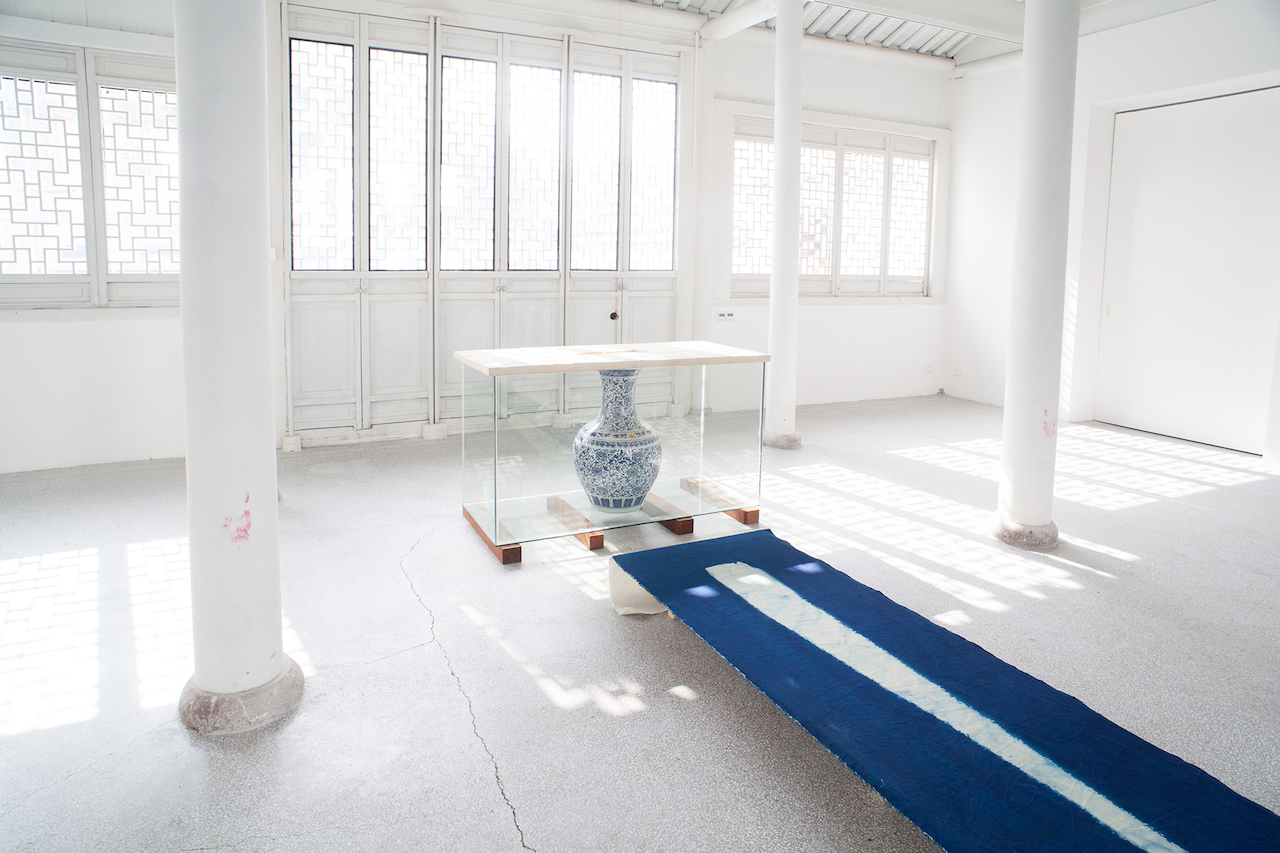We caught up with Yoojin Tang, who is the program manager of the new residency program Points Center for Contemporary Art in Kunshan. Located in the ancient water town Jinxi, also known as Chen Mu, close to Shanghai, the contemporary residency focuses on curatorial practices, visual art, new media art, video, performance.
CR: Points Center for Contemporary Art was founded in 2017, is that correct? How did the art residency start and what was the idea behind it?
YT: Yes, Points Center was founded in the later 2017, and the residency program started from 2018. The art residency was already included from the very beginning of its establishment both conceptually and practically. That’s why each of the four residential villa are designed differently to suit for artists and researchers from different disciplines. Together with other two spaces for exhibitions and presentations, each resident are provided with very good creation and living conditions. In addition to exotic inspiration and production, the residency could be an opportunity for network as well as retreat.
CR: What is your role in the residency? How did you get involved?
YT: I work as the program manager for the Points residency programs. Before I joined in Points Center, I worked for several other non-profit art spaces where I was recommended to the current one. My interests in art residency grows after I finished the academic studies in Netherlands. I am quite happy and lucky to work on things of my interests, and broadly within the art and culture communication.
CR: Can you tell us a bit about yourself and your background?
YT: Apart from program managing, I also research and produce on my own artistic works. I graduated with B.A. in new media art from Shanghai Institute of Visual Arts and M.A. in media design and communication from PZI, Willem de Kooning Academy in Rotterdam. I work across video art, interactive media and the DIY culture of the network, and the output is between installation, video projection and objects.
In the recent years, as I mentioned before, I’ve engaged in a few non-profit art spaces mainly work for media art studies and communication, at the same time more or less in connection with the production of artistic works. Since Points Center is non-profit as well, the program managing, I think, is more producing-oriented instead of business operations.
CR: Your residency is located in Jinxi Ancient Town in the Kunshan area. How did you decide on this specific place for the residency?
YT: I have to point out that it is our chief director who made the decision and already a few years ago. I’ve heard a lot of stories about the places at the very beginning. My understanding is that Jinxi is a very special existence comparing to the other water towns nearby like Zhou Zhuang. Jinxi is open to the public without admission fee and is not over occupied by tourists. It is a place that residents can observe preservation of primitive cornices, brick and tile relics from Song Dynasty, Qing Dynasty etc. Of course there are much more about history and culture, meanwhile it is also an ancient town with imperial culture.
The location is so close, yet so far away from Shanghai city center. On the one hand, the artists in residency can concentrate on their own stuff in a very different environment, on the other hand, they can also access to the art scene and networking with locals easily.



"Here and There". Installation by resident-artist Yui Inoue from November 2018.
CR: Can you talk about the facilities on site available to the artists? Where are the studios for artists in residence located, for example?
YT: We provide living spaces and working studios within the center. As I mentioned we have an exhibition space, an ancient pavilion, four villas and so on. The upper floors of the villas are used for living spaces. Each villa has two to three separate rooms with toilets, showers, bedding, closets and desks inside, which is very enough for working at personal computers. Rehearsals, installation works can be done on the Lower floor. Each of the lower floor has different functions, including a theatre, a presentation/lecture space, a meeting venue as well as the space for on site production. We also have a shared kitchen and washing/drier machines which are nicely arranged in a container inside our yard.
To support other than these above, residents can apply to us for wood-working station nearby, and facilities from a maker community in Shanghai.
CR: What range of experience are you looking for in potential artists in residence?
YT: The residency is open for artists and curators from different disciplines, with locality and community in mind. For the artist-in-residency, we tend to focus on time-based media works, like performance art, video art and installations, as well as research involved with public engagement.
The following types are listed in our open calls: Curatorial practices, visual art, new media art, video, performance.
CR: What does the residency provide? What should the artists arrange for themselves?
YT: So far we have three types of residency programs, “International Residency Exchange” for inter-organizational exchange, ”Short-term Residency” mainly for domestically based artists, ”Points Open Call” for only two artists per year. It differs from each other, whereas we provide free living and working spaces. For different programs we have different budget for creation, transportation and living expenses. The artists should take care of their visas, insurances, and other equipment and costs which are not stated above.
CR: Do the artists leave work once the residency is done? What are some of the must do’s for the artists as part of the residency agreement?
YT: For the exchange program and short-term residency we didn’t ask for that, however we list the requirement to leave one piece of work in any form in our open calls. I heard about the idea/ slogan “one work one stay” from a Japanese organization, sounds also reasonable to me. We only states that “applying artists must comply with local laws and regulations during the residency period”. There are rules they need to obey while using residential spaces.


"City under the Water", Yuya Suzuki.
CR: How do you promote your residency to attract local and international artist applications?
YT: We release open calls, news, updates etc on our official website, social media and residency & open call platforms. We also invite partners, university professors, curators and friends to share in their network.
CR: You can accommodate up to 8 artists in residence. Are group applications welcome?
YT: Yes, 8 in total per year, and 4 at the same time. We do welcome group applications however they need to share the facilities and funds within the group.
CR: How many people are on staff running the residency?
YT: There are five who are running the residency.
CR: I see you had at least five artists-in-residence since July 2018. Is that correct? What kind of artwork have the resident artists created? Can you give us an example or two of some of the most interesting projects by residents?
YT: Yes, there are four artists and a theatrical team leading by a director. Three of them are from our exchange program, Masanori Matsuda, Yui Inoue, and Yuya Suzuki. I have to talk about three then. They were all influenced by the story of Empress Chen and the water lines. However, they all took very different angle and ways to address what have been learnt and researched. There are smart metaphors and a visualization of energy.
Besides, the interesting part is when there is time overlap, the residents learn from each other—— Li Zhenhua told and showed the cyanotype method to Masanori. I was also very glad to see how Zhenhua worked with food. You should check our Yearbook which will be released soon.



"Water Road to Chen", Masanori Matsuda.
CR: Can you tell us a bit more about the opportunities you provide for residents to meet people in the local creative scene?
YT: Usually we arrange two trips, one is to take them to local artists’ studio, the other is to take them to important museums and galleries in Shanghai. If they have someone or some places in mind want to visit, we can also try to help.
Besides, we invite international professionals to talk with them, exchange ideas about creations.
CR: What are the opportunities available for visiting artists to share their work with the public?
YT: For each residency we have either open days during the residency or exhibition at the end of the residency. They can choose both depending on time frames. We also ask if visiting artists would like to give public presentations or workshops, which can be arranged accordingly.
CR: Do you help artists in residence sell their work?
YT: Not directly, we recommend some to foundations. If they like, they can purchase from their representing galleries or talk to the artists directly.
CR: Is there anything else you'd like to add about the program, your mission, or the opportunities you provide for artists?
YT: Enjoy the residency! To both my colleagues and visiting artists, we should enjoy this opportunity.
This interview was conducted by Xiaoyao Xu via e-mail for China Residencies in February 2019. All the photos courtesy of Points Center for Contemporary Art.
